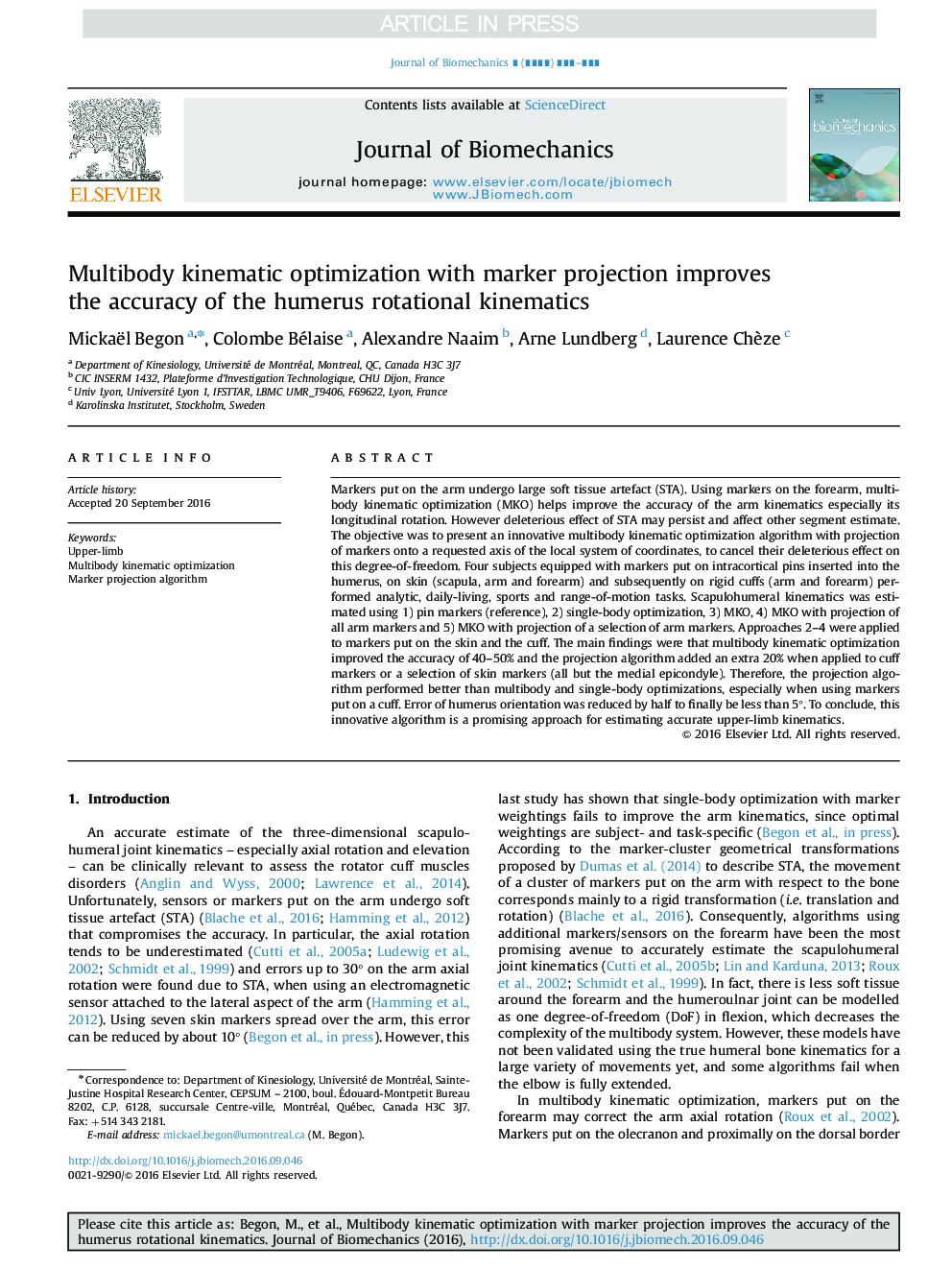| Article ID | Journal | Published Year | Pages | File Type |
|---|---|---|---|---|
| 5031895 | Journal of Biomechanics | 2017 | 7 Pages |
Abstract
Markers put on the arm undergo large soft tissue artefact (STA). Using markers on the forearm, multibody kinematics optimization (MKO) helps improve the accuracy of the arm kinematics especially its longitudinal rotation. However deleterious effect of STA may persist and affect other segment estimate. The objective was to present an innovative multibody kinematics optimization algorithm with projection of markers onto a requested axis of the local system of coordinates, to cancel their deleterious effect on this degree-of-freedom. Four subjects equipped with markers put on intracortical pins inserted into the humerus, on skin (scapula, arm and forearm) and subsequently on rigid cuffs (arm and forearm) performed analytic, daily-living, sports and range-of-motion tasks. Scapulohumeral kinematics was estimated using 1) pin markers (reference), 2) single-body optimization, 3) MKO, 4) MKO with projection of all arm markers and 5) MKO with projection of a selection of arm markers. Approaches 2-4 were applied to markers put on the skin and the cuff. The main findings were that multibody kinematics optimization improved the accuracy of 40-50% and the projection algorithm added an extra 20% when applied to cuff markers or a selection of skin markers (all but the medial epicondyle). Therefore, the projection algorithm performed better than multibody and single-body optimizations, especially when using markers put on a cuff. Error of humerus orientation was reduced by half to finally be less than 5°. To conclude, this innovative algorithm is a promising approach for estimating accurate upper-limb kinematics.
Keywords
Related Topics
Physical Sciences and Engineering
Engineering
Biomedical Engineering
Authors
Mickaël Begon, Colombe Bélaise, Alexandre Naaim, Arne Lundberg, Laurence Chèze,
